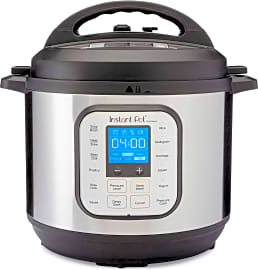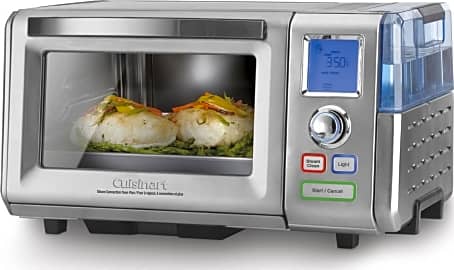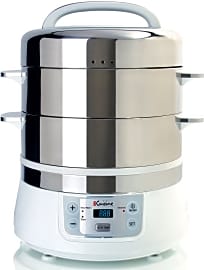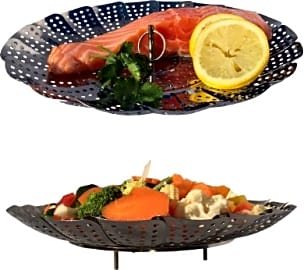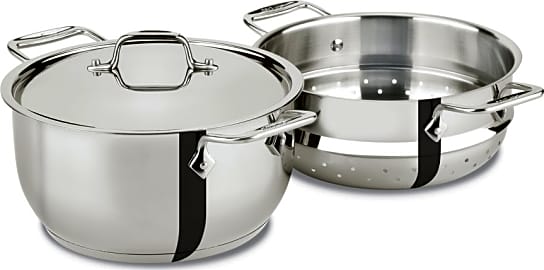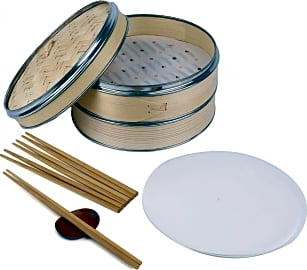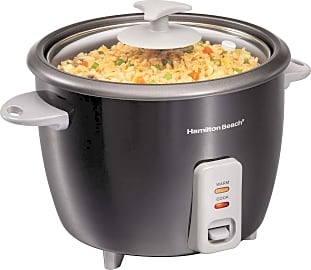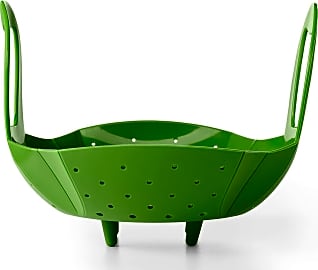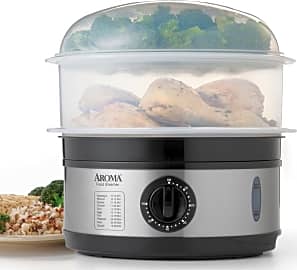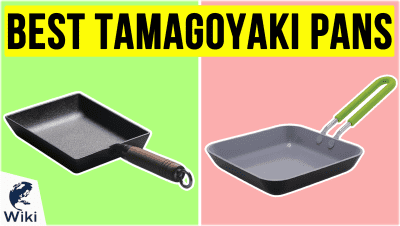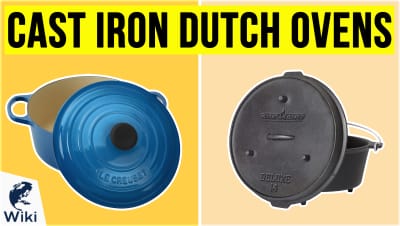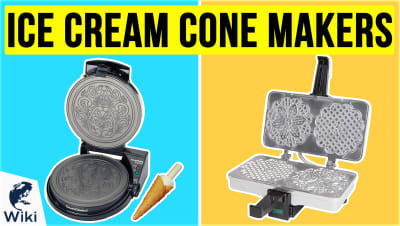The 10 Best Food Steamers

This wiki has been updated 41 times since it was first published in April of 2015. Steaming food has long been one of the best ways to cook fresh vegetables, grains, and fish without removing nutrients or their subtle flavors. With no added fats in the equation, the right addition to your kitchen will help you maintain a diet conducive to good health and increased longevity. Some of these models are quite simple, while others can replace a number of gadgets. When users buy our independently chosen editorial picks, we may earn commissions to help fund the Wiki.
Editor's Notes
May 04, 2021:
We made a few changes to the Wiki based on availability issues and new, upgraded models. The OXO Good Grips and Aroma Housewares AFS-186 both replace similar items that weren't quite as cost-effective and are also difficult to find now. The Instant Pot Duo Nova is the latest iteration of a wildly popular appliance, and while it only offers minor refinements, you can be certain it provides an easy and satisfying user experience.
The biggest change this time around is the addition of the Cuisinart 300N to the top three. While some steamers are unitaskers, this one does a great job at a wide variety of tasks, including making toast and cooking pizzas up to 12 inches. As long as you have the counter space for it and are willing to make a decently sized investment, it can make cooking much more convenient for years to come.
January 23, 2020:
The best steamer doesn't need to be an electric model if your only intention is to steam your side vegetables a couple times per week. For those cooks we included the Kitchen Deluxe Basket and the Piranha Fish, both functional and versatile in the variety of pots they can fit into. They'll also save you money and precious counterspace.
For those who want to steam one-pot meals or side dishes for larger families the electric models can make healthy cooking easier during busy mealtimes. We like the large capacity plus the added features of the Cuisinart Cook Fresh, like the pre-programmed settings for different foods like seafood, grains or poultry, an LCD control panel, and an audible alert.
Stacked models like the electric Euro Cuisine FS2500 or the Von Shef Bamboo are the classic choice if you want multiple dishes steamed at once, but if you put fish or seafood in one of it's tiers, the rest of the food's flavor will be affected.
Special Honors
Alto-Shaam CombiTherm Ovens These are so well-known in the professional catering industry that the combination oven in many pro kitchens, regardless of brand, are often referred to as "the alto-shaam." If you've ever worked with one, you know why that is: They're some of the most effective, most consistent, and most reliable high-volume steamers on the market. Of course, you'll need an outsize budget to even consider investing in one. alto-shaam.com
The Science Of Steam
Heat will–not invariably, but mostly–make proteins firmer and caramelize carbohydrates.
Though they may look a little alien at first, these steam cookers are supremely simple in design. After all, steam cooking isn't that complex a process: water boils and creates steam, the hot steam encompasses the food in question, and its heat cooks the food.
Okay, well, how does the heat cook the food? That's an important thing to understand when choosing to steam a vegetable rather than to bake it or boil it.
Since the majority of the foods you're going to steam are composed primarily of proteins, fiber, and carbohydrates, let's look closest at those.
Heat will–not invariably, but mostly–make proteins firmer and caramelize carbohydrates. That's why hard boiled eggs get, well, hard, and why bread browns when you bake it. The proteins are firming up in the eggs and the carbs are caramelizing in the bread (and the snozzberries taste like snozzberries!).
When you steam a food, those proteins still firm up and the carbs still caramelize, but the fiber that makes up the bulk content of vegetables breaks down. That's why a carrot will get sweeter (caramelizing) and softer (fiber break down) as it steams.
Most foods also lose water through evaporation as they cook, which is why steaming and boiling make for such moist foods. Remember though, steaming preserves more vital nutrients like folic acid and vitamin C than boiling does. It's definitely the healthier choice.
How Much Steam Is Enough?
Unless you're feeding a small army, the odds are that the steamers we're reviewing here today will fit your needs and fill your family's bellies.
If you are feeding a small army, you could always opt for one of these industrial steamers, though I hope you've got a large enough kitchen at your disposal.
Certain other features should play a role in your decision, as well.
Size is an important factor when choosing a steamer. If it's just you alone in your house, that smaller, collapsible metal steamer at number five might be enough for you.
Just don't go steaming broccoli or cabbage in it because that could give you gas, and we want you to go out and meet people, make some friends so you can eventually also buy one of the bigger steamers.
Certain other features should play a role in your decision, as well. A water reservoir that you can fill externally (usually through a small opening in the side of the steamer base) is a dream. Also, the longer you can set your steamer to run on its own, the better, especially if you like to steam through tougher ingredients or go on short vacations while you're cooking.
Steaming With Possibilities
Steam is a powerful thing. It's helped us build entire industries, cross continents on locomotive trains, and secretly open envelopes addressed to our loved ones.
From the late 18th century, when we began to incorporate steam into our lives as a source of pressure power, artistic minds like those of Jules Verne and H.G. Wells have imagined myriad possibilities for its use.
It's helped us build entire industries, cross continents on locomotive trains, and secretly open envelopes addressed to our loved ones.
The works of those artists and inventors would later inspire a generation of writers and artists in the 20th century who looked back at our transition to electric and combustion power to ask, "What if steam had remained the predominant source of power, even in the inventions that followed?"
That question led to incredible works of fiction from the 1950s onward, and gained the term Steampunk in the late 1980s.
Steam wasn't always a source of power, though. Its original use, as we've endeavored to explore here, was primarily in cooking.
Evidence of steam cooking dates back at least 7000 years in China, and as many as 10,000 years here in the US. The eastern methods were primarily bamboo and cypress steaming, where the native Americans of the ancient southwest used clay.
The amazing thing is how little has changed in the cuisine, as both cultures still utilize modernized versions of those same tools to cook food the way their ancestors did so long ago.


